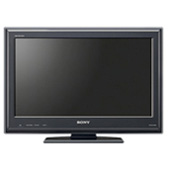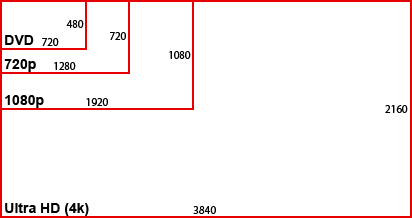

In addition, DTV & HD have the ability to handle multi-channel audio. Formats like Dolby Digital Surround can be broadcast into your home. With a surround sound system, mulit-channel audio can be fully enjoyed. Without a surround sound system, the audio will be flattened into either stereo or mono depending on your receiver or television.
Some of this may be confusing if you are a beginner, but hang in there, the rewards are enormous. Once you have experienced high definition you will never want to go back. Read on to learn why HD looks so good.
Resolution explained
Picture a sheet of graph paper (you know the kind you used in school). If you were to add more lines in between the existing lines you would have more lines, right? So the more lines, the more detail in the image. The more detail in the image, the clearer the image.
HD resolutions surpass that of NTSC which has only 525lines(but actually only 480 visible). HD is usually defined by the most popular resolutions of 1280(width)x720(height) and 1920(width)x1080(height). To simplify it, when discussing those two formats they are usually shortened to only the height resolution. Hence, 720p and 1080i. But wait, what are those letters?
In specifying HD resolutions the “p” and “i” stand for “progressive” and “interlaced”. Progressive is a single scanned line while interlaced is a alternating of lines (odd & even). Some say that because “interlaced” has more lines (1080) it produces a sharper image. Others argue that the single scan (720) line is sharper because it is not using alternating lines to capture an image. To see this you can compare pausing an interlaced image with a progressive scan image. When objects are in motion, progressive seems to capture the image with more clarity. On the flip side, if you are watching a stationary object the interlaced image may seem clearer.
HDTV is also wider than NTSC. This allows movies to be viewed in a format much closer to their original format, which is the “widescreen” format called 16:9. If you have a widescreen television you should not get those black bars at the top and bottom of the screen that so many people find annoying.
The below diagram shows you the traditional NTSC verses HDTV.

Read on to learn more about HDTV.

